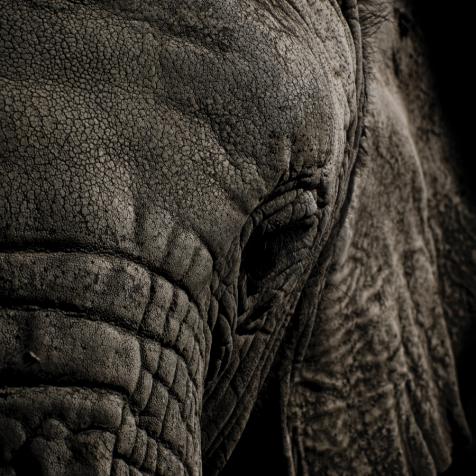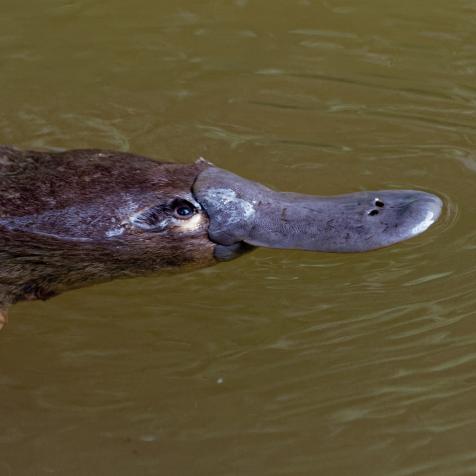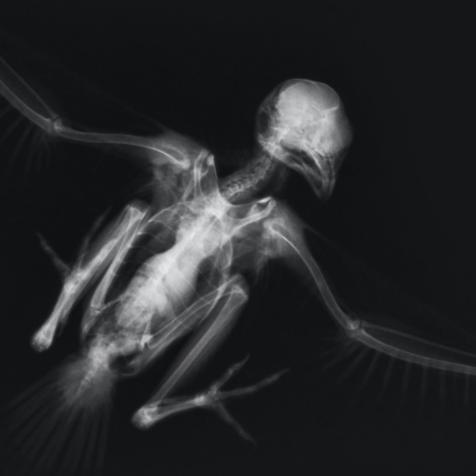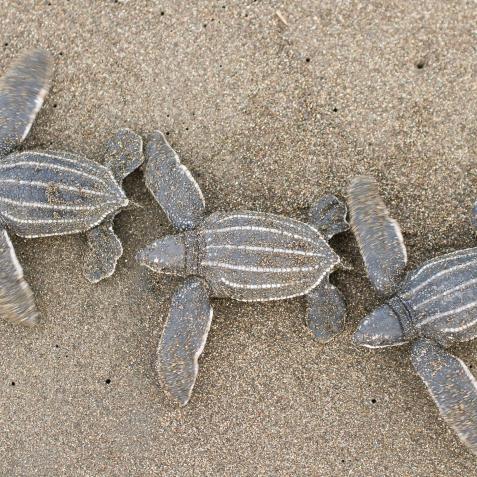
Nathan Edwards
PORT MACQUARIE, AUSTRALIA - NOVEMBER 29: A koala named Rose from Thrumster recovers from burns at The Port Macquarie Koala Hospital on November 29, 2019 in Port Macquarie, Australia. Volunteers from the Koala Hospital have been working alongside National Parks and Wildlife Service crews searching for koalas following weeks of devastating bushfires across New South Wales and Queensland. Koalas rescued from fire grounds have been brought back to the hospital for treatment. An estimated million hectares of land has been burned by bushfire across Australia following catastrophic fire conditions in recent weeks, killing an estimated 1000 koalas along with other wildlife. (Photo by Nathan Edwards/Getty Images)
Nearly 500 Million Animals Have Been Lost in Australia’s Wildfires
The wildfires in Australia continue to spread across the country—destroying homes, forests, animals, and anything in its path.
Australia’s devasting wildfires are growing as fire season rages on across the country, particularly in New South Wales and Victoria. These are the worst wildfires that Australia has seen in decades.
Similar to California, Australia has its fire season every summer when the hot, dry weather makes it very easy for fires to naturally start and spread. However, unlike California, the embers are often carried by the wind which exacerbate the spread of these brushfires, making them challenging to control.
The Australia wildfires are incredibly heartbreaking. @AustraliaZoo is doing everything they can to help. Find out how you can make a difference: https://t.co/YzWLHTdRxw @wildlifewarriors @bindiirwin @robertirwin @terriirwin #AustralianBushfire pic.twitter.com/tuzpHjj6QQ
— Animal Planet (@AnimalPlanet) January 6, 2020
The deadly bushfires have destroyed over millions of hectares of national parks and forests, devastatingly impacting wildlife and plant populations across the country. According to ecologists from the University of Sydney, about 480 million mammals, birds and reptiles are estimated to have perished since September.

Fairfax Media
A wallaby licks its burnt paws after escaping a bushfire on the Liberation Trail near the township of Nana Glen on the Mid North Coast of NSW, November 12, 2019.
Hospitals around the country are flooded with animal burn victims, especially koalas who are slow moving and live in eucalyptus trees. They also mainly eat eucalyptus leaves which are rich in oil, making them quite flammable victims.

Nathan Edwards
Female koala Anwen recovers from burns at The Port Macquarie Koala Hospital on November 29, 2019 in Port Macquarie, Australia. Volunteers from the Koala Hospital have been working alongside National Parks and Wildlife Service crews searching for koalas following weeks of devastating bushfires across New South Wales and Queensland.
“Almost a third of koalas in NSW may have been killed in the fires, and a third of their habitat has been destroyed,” said Federal Environment Minister Sussan Ley. Koala experts are working with the government, which has allocated $6 million to establish corridors and a plan for releasing animals that have been in hospitals, according to Ley.

Nathan Edwards
A koala named Pete from Pappinbarra at The Port Macquarie Koala Hospital on November 29, 2019 in Port Macquarie, Australia. Koalas rescued from fire grounds have been brought back to the hospital for treatment.
The Irwins have also joined in helping the recovery efforts to help with the wildlife affected by the deadly fires.
Sadly, the scope of the destruction is likely to continue to soar as temperatures continue to remain hot, dry, and windy through the weekend and summer season. Firefighters and volunteers will continue their efforts to tame the fires and save as many animals as possible.


















